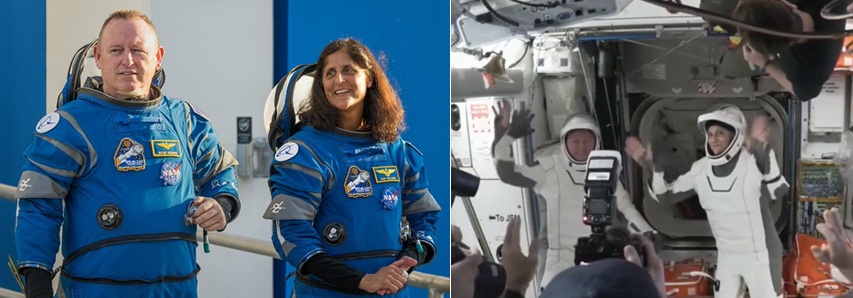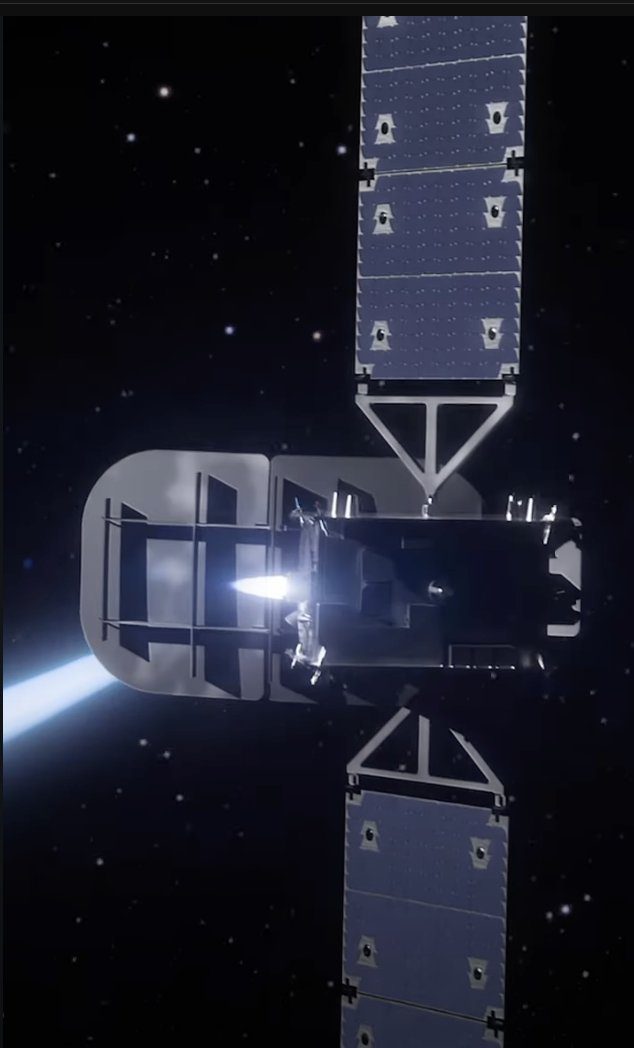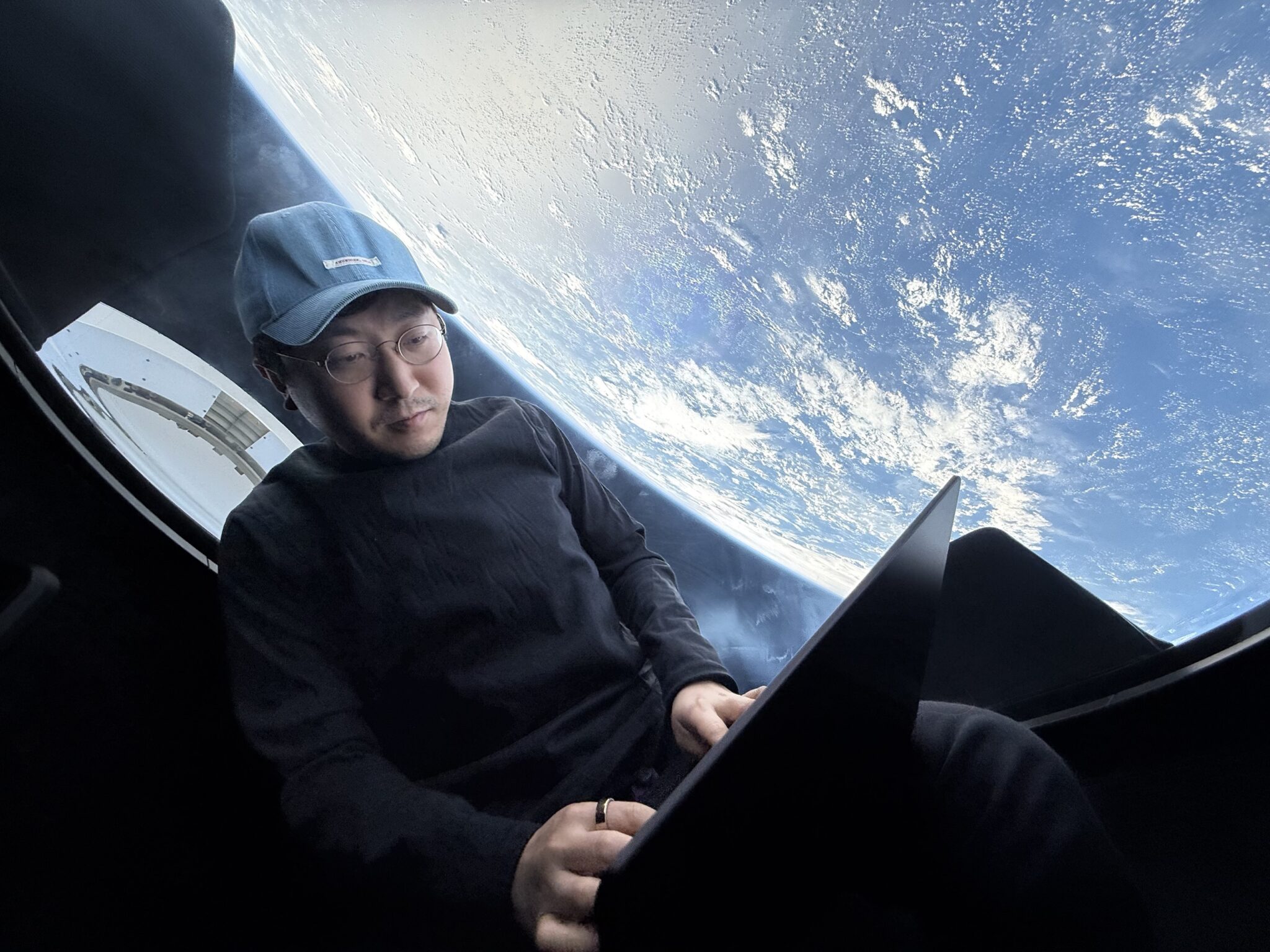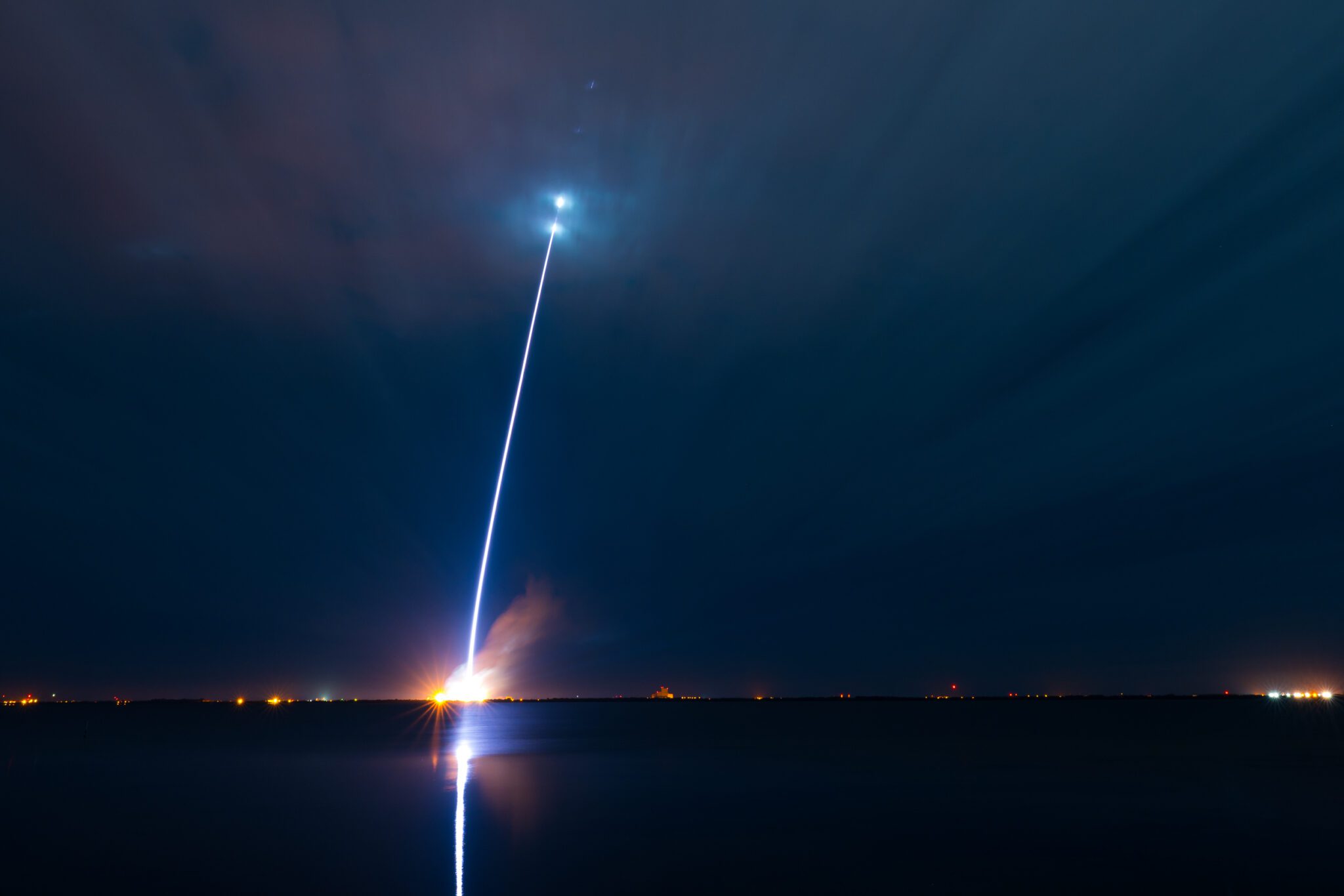While there remain elements of Communist China’s history that cause more sadness and regret than outright celebration, the Chinese nation does have one thing can it can unequivocally celebrate: China’s much admired space programme. At the 64th International Astronautical Congress (IAC 2013) being held in Beijing (Peking) in late September, China was keen to note its great achievements in spaceflight.
The History – struggling though to success
The year before Chairman Mao began the calamitous famine inducing “Great Leap Forward”, China’s less publicised but much more successful attempt at technological progress was the formation of the Chinese Academy of Launch Vehicle Technology (CALT) in 1957. Despite being under the protection of China’s moderate first minister, Zhou Enlai, it was not, however, until after the worst excesses of the “Cultural Revolution” that in April 1970 China’s nascent space programme finally managed to launch its first satellite, Mao-1.
After that, China went on a slow but steady path to develop its very successful and reliable Long March launch vehicle series which, by the 1990s, threatened to dominate the world’s commercial satellite launch market by offering reliable launches at very low prices. Then disaster struck.
Two major commercial launch failures of a Long March 2E (killing six people in January 1995) and a Long March 3B in February 1996 (killing scores of people when it hit a village) effectively ended China’s commercial launch prospects – not because the fairing and guidance faults were technically insurmountable – with the help of US firms these were actually rectified – but precisely because of this help that the US government imposed draconian ITAR export and data transfer regulations defining all space technology as “munitions”. The result was that any satellite which carried US technology aboard (virtually all commercial satellites) were, in effect, no longer allowed to use Chinese launch vehicles.
However, the Chinese space phoenix rose again. Stemming from a decision made in September 1992, in October 2003, with the help of Russian life support and spacecraft technology, China stunned the world by becoming the third nation to launch its first astronaut, Lt. Col. Yang Liwei flying on the Shenzhou 5 spacecraft which was launched using China’s own Long March 2F rocket. Onward from this there have been further major achievements in manned spaceflight including the China’s first astronaut space walk in 2008, the perfection of rendezvous and docking techniques with a small research space station called Tiangong-1 in 2011 and short astronaut stays.
It is not just in manned spaceflight that China has prospered. China’s commercial launch provider/marketing company China Great Wall Industries Corporation (CGWIC) has both managed to launch “ITAR free” satellites built by other nations, but has also offered “turnkey” solutions involving both the construction and launch of DFH-4 communications satellites (built by its subcontracted sister company CAST) to nations in need of communications satellites.
Even more promising for China, is ITAR restrictions are now being relaxed by the US government who realise that they were, in fact, counterproductive to US space interests. As such both CGWIC and CALT could again find themselves in a competitive position to launch satellites commercially.
In satellite construction, apart from offering advanced communications satellites via its now reliable DFH-4 series, most other orbital missions are now also catered for, including most notably by China’s Feng Yun series of weather satellites and the Beidou series of navigation satellites. Less public are several high resolution reconnaissance and electronic intelligence satellite types used for defence purposes.
In the field of unmanned exploration, China has had success with its Chang’e lunar probes. Named after the mythical princess who flew to the Moon, Chang’e 1 was launched in 2007 on a successful lunar orbiting mission. The follow-on Chang’e 2 mission performed a similar lunar surveying mission before being sent to the L2 Lagrangian position and then sent on its way to the asteroid Toutalis.
China’s space organisational structure
Officially China’s National Space Administration under directives from China’s central government, sets the policies for the rest of China’s space programme to follow. However, since 1999 it is the Chinese Aerospace Science and Technology Corporation (CASC) which remains the lead organisation in executing space policy. Reporting to CASC are the main space academies: CALT and CGWIC which each have their own functions in constructing and marketing launch vehicles; the Xian Academy of Aerospace Propulsion which builds rocket engines; the Chinese Academy of Space Technology (CAST) for making spacecraft, and Chinasat for operating communications satellites.
To encourage some internal competition at least, one time maker of the unreliable Feng Bao launch vehicle and current spacecraft constructor, the Shanghai Academy of Space Technology (SAST) is technically a competitor of CALT and CAST but again remains subservient to CASC.
China Aerospace Science and Industry Corporation (CASIC) is separate from CASC and acts mainly as a military aerospace constructor. The manned space programme is managed by the China Manned Spaceflight Engineering Office (CMSEO).
Plans for the future: unmanned lunar rovers and a major manned space station
At the IAC 2013 congress it was reported that a new much larger Chinese space station is being designed. This new station will be launched in 2023 and will use a three docked module configuration and be used for biomedical research into the effects of long term spaceflight on humans.
This could be around the time that the International Space Station is being retired, though surveys of the main modules of the ISS have indicated that it could go on to 2028 if funding is found. China has hinted that it will welcome international astronauts to its station, and possibly even foreign-built spacecraft and modules.
Before China builds its large station, a follow-on smaller space station Tiangong 2 will be launched in 2015 and will be used to test out technologies such as in orbit refuelling techniques using a new unmanned cargo craft as well as regenerative new life support systems.
China had indicated that it eventually wants to land its astronauts (“taikonauts”) onto the Moon but needs to develop the necessary technologies including a heavy lift rocket and lunar lander. China also holds interests in developing winged reusable spacecraft had has started research into air breathing rocket technology.
Most immediately, China looks forward to the landing of an unmanned rover on the Moon as part of its Chang’e 3 mission which is set for launch at the end of the year. Eventually, China plans to launch extensive unmanned missions to the planets including a Jupiter orbiter and Mars rovers and a Mars sample return mission.
All roads point to Lox/Kerosene propellants for Long March launch vehicles
China’s most immediate need is for a new heavy satellite launch vehicle. The Long March 5, and its planned smaller Long March 6 and 7 derivatives, mark a major technological change compared to past Long March launch vehicles. The rocket uses a new set of propellant types, using an Ariane 5-like Lox (liquid oxygen)/liquid hydrogen core stage powered by two 699.5Kn YF-77 engines, surrounded by four 1200kN (Sea Level) single YF-100 engine Lox/kerosene booster rockets. Long March rockets have previously used Hydrazine (UDMH)/Nitrogen Tetroxide as the propellants for their main stages. China’s latest LOx/Kerosene engines use a high-pressure staged combustion cycle rocket cycle, similar to those used by Russia which are more efficient and have a high specific impulse than the more traditional gas generator cycle.
Li Tongyu, General Manager of CALT’s marketing arm and a 30-year veteran at the academy, emphasised that China likes to maintain its ready-to-go advantages, noting that by making various changes the launch campaign of the Long March 3B has been reduced from over 50 days to just 23 days. Rocket availability and cost benefits are helped by the fact that CALT bulk-builds rockets 100 at a time.
However, the Long March 3B is the past and present, and it is the Long March 5 launch vehicle that represents the future. The rocket core uses cryogenic propellants of Lox (liquid oxygen) and liquid Hydrogen with four Lox/kerosene burning boosters to achieve lift off. With this rocket some 10,000kg can be carried into a Geostationary Transfer Orbit (GTO). This marks a considerable increase on the maximum satellite payload of 5,500kg that can be carried to GTO by a Long March 3B – currently the most powerful rocket in the Long March family. For clients wanting their satellites delivered “all the way” to geostationary orbit, a new upper stage is being designed to take a 5,000kg satellite.
A new multi-start upper stage engine, the YF-75D, is being developed which uses cryogenic propellants Lox/liquid hydrogen in a very efficient expander cycle that is similarly used by comparative western upper stage engines (e.g. the RL-10 and the Vinci).
Li Tongyu described via an interpreter during a meeting at CALT’s headquarters and main production facility in Beijing that the Long March 5 would be built in Tianjin, a city near Beijing but away from CALT’s current base. While the first launch of Long March 5 has been delayed until 2015 due to reported structural difficulties, Mr Li denied that there had been any serious development problems.
Mr Li noted that there would be a long transition lasting some 10-15 years between the current main GTO rocket, the Long March 3 series (3A, 3B and 3C) and the full takeover of operations by the Long March 5. When asked if China had ever considered using foreign sites close to the equator (such sites get the best spin boost from the Earth and for GTO missions require less inclination removal) Li joked that China would obviously like a launch site near the equator but intimated that it was unlikely to happen. China, of course, is planning to make such launches from its new launch site in Hainan which is closer to the equator than its other launch sites.
When asked about the possibility of using reusable rocket stages which are similarly being studied in the West, Li Tongyu replied that China was also itself researching the feasibility of such methods. Li Tongyu also noted that China had become aware of the need to offer more “piggy back” rides for smaller satellites and special dispensers were being developed. Making reference to when such rides would be ready, Li said: “We will periodically publish our chances (opportunities) to the world.”
While China has previously been criticised for making a debris cloud during a missile interception test of one of its own satellites, China appears to be more serious in reducing launch vehicle related debris in orbit. Mr Li was emphatic that CALT took special attention in de-orbiting its spent rocket stages after use.
Manned moon missions need heavy lift rockets and China is designing one
China, of course, has much bigger aspirations and realises that one necessary element it needs for long range missions such as manned lunar landings is a heavy lift launch vehicle. Trade off studies has led to two configurations being finalists for China’s heavy lift launch vehicle – one using Lox/kerosene boosters and first stage with a Lox/liquid hydrogen upper stage – and one having a Lox/hydrogen first and upper stage with solid rocket boosters. Surprisingly, the configuration used by the smaller Long March 5 and by the Soviet-era Energia heavy lift vehicle and a possible configuration for NASA’s Block 2 SLS of having Lox/kerosene boosters attached to a Lox/Liquid hydrogen core and upper stage, appears not to have “made the cut”.
According to Dr Ma Xingrui, Administrator of the China National Space Administration, the proposed lunar heavy lift launch vehicle does not, as yet, have a formal designation though some sources have named it as Long March 9 (CZ-9). Whatever its designation, both he and Li Tongyu confirmed that the vehicle was likely to follow the path of having a four engine Lox/kerosene core with four single engine Lox/kerosene boosters. With a twin engine Lox/hydrogen upper stage, the configuration is like a super Saturn V and will have a payload to Low Earth Orbit of “above 100 metric tons”.
The Chinese are hoping to reach much more than this payload capability with 130 metric tons to LEO and 48-50 metric tons to lunar transfer orbit being mooted. This would be more powerful than the Apollo-era Saturn V which could carry 118 metric tons to LEO. However, China is thought to be planning more ambitious missions than small scale single launch vehicle Apollo-class landings, and it is reported to be examining lunar landing architectures that use more than one launch and a lunar rendezvous techniques.
To build its heavy lift rocket, China’s own rocket establishments, CALT and the Xian rocket institute, are designing much larger rocket engines than it currently has. At 1,960kN (440,000lb) thrust, the Lox/Liquid hydrogen YF-220 is planned to have nearly three times the thrust of the Long March 5’s YF-77. Two YF-220 engines (thought to be using the simpler gas generator cycle) would be used for the upper stage of the most favoured configuration. Meantime, if the favoured core and booster engine, the Lox/Kerosene YF-650, is built, it really will be a powerful engine at 6,360kN (1.43 million lb) thrust at Sea Level. Four would be used on the favoured configuration’s core first stage with one each on the boosters.
While some have suggested that the YF-650 would be a dual chamber engine, Li Tongyu explained that the engine will, in fact, be a single chamber engine. If true, this engine would rival the Saturn V’s original 6,700kN (1.52 million lb thrust) F-1 engine as the largest single chamber rocket engine in the world. It would use a more efficient staged-combustion cycle over the F-1’s simpler gas generator cycle.
China, as the third space world power, rues being left out of discussions over an international “Global Exploration Roadmap”. Nevertheless, whether China’s planned heavy lift capabilities allow it to go it to go its own way in human long range exploration remains to be seen.
China’s space prowess , of course, remains wedded to its economic fortunes. For as China has prospered so has its space programme. So far China’s growth has been continuous but the nation’s growing economic power may yet wane – possibly due to an eventual age imbalance in its population caused by its controversial one child policy. Nevertheless, for the time being, it remains so far so good for China. In fact, China’s leadership has wisely not let its new found financial wealth completely dictate the pace of China’s space programme, preferring instead to allow it go at its own steady and planned rate. China, in effect, refuses to take part in any “space race.”
As such, there may be an interesting parallel here between the “space race” and the fabled race between the tortoise and the hare. While the USA and Russian space programmes (the “hares”) have often shot ahead, it could yet be the slow, steady but relentless pace of the Chinese space programme (the “tortoise”) that eventually wins the “space race” – whether it wants to win it or not.







